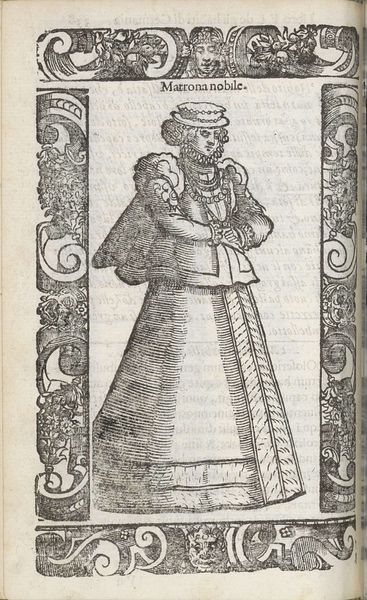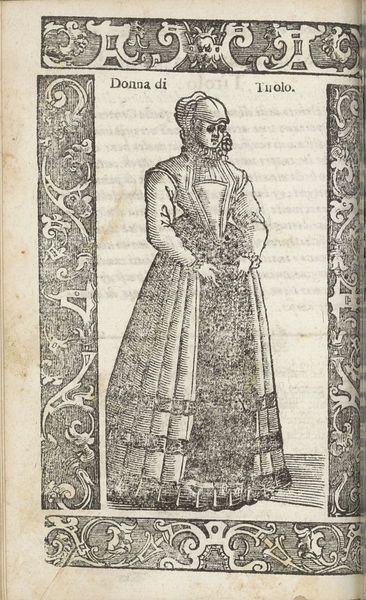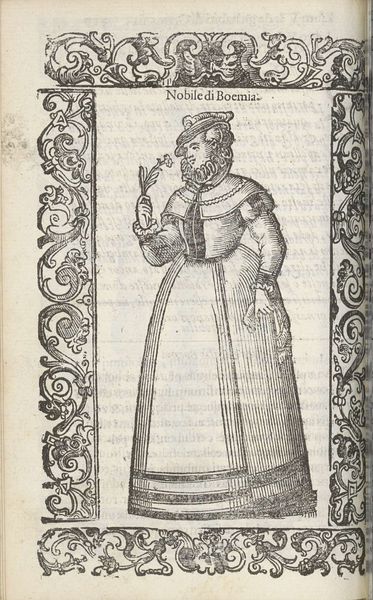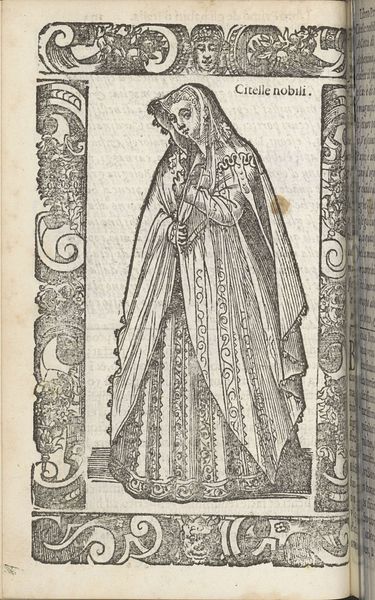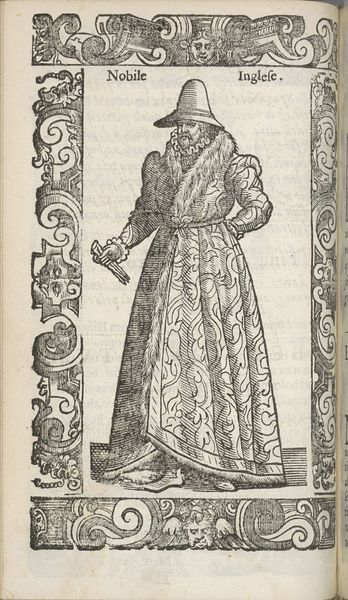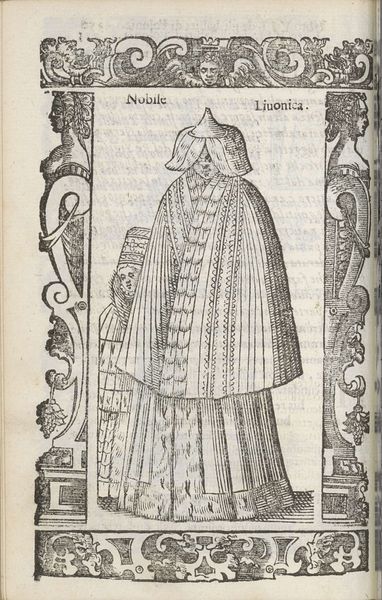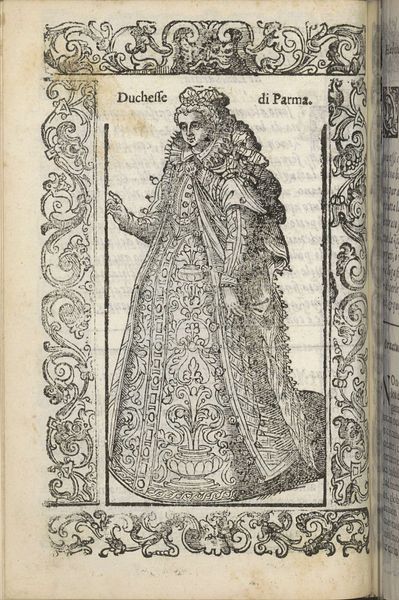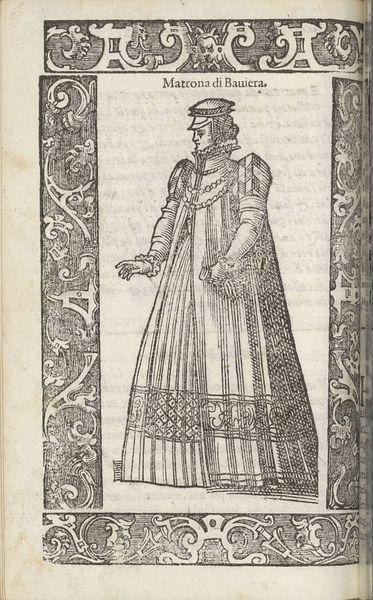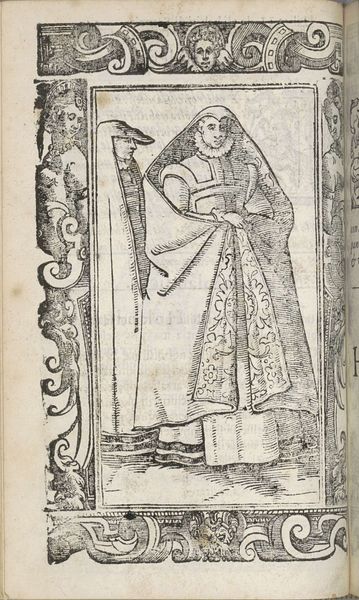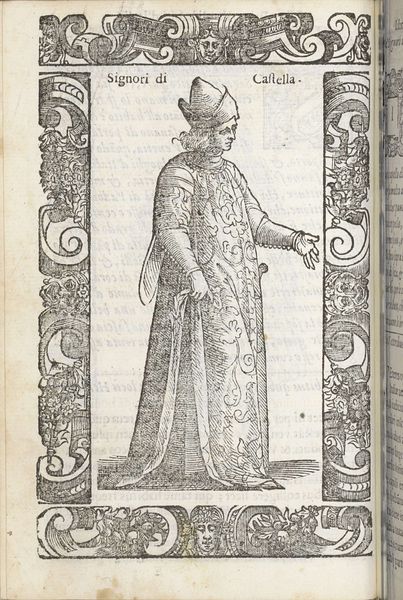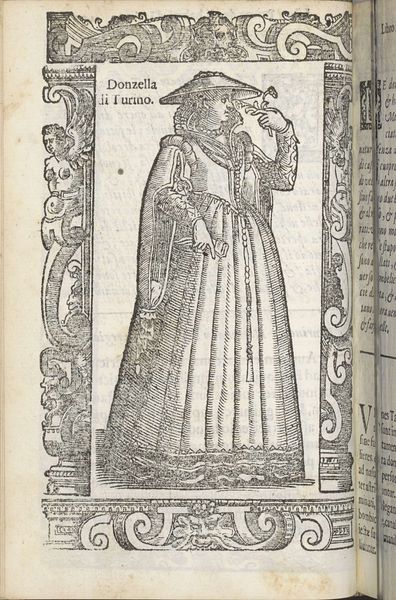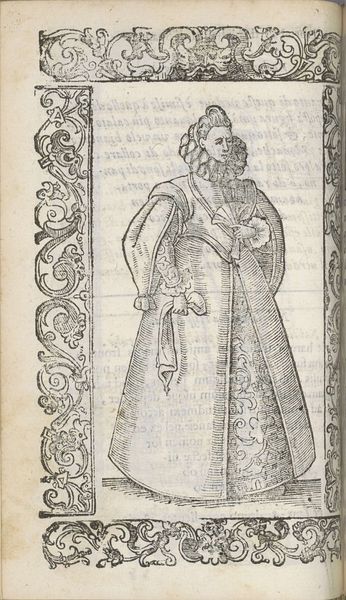
drawing, pen, engraving
#
portrait
#
drawing
#
pen drawing
#
pen sketch
#
old engraving style
#
sketch book
#
mannerism
#
personal sketchbook
#
sketchwork
#
pen-ink sketch
#
pen work
#
sketchbook drawing
#
pen
#
sketchbook art
#
engraving
Dimensions: height 167 mm, width 125 mm
Copyright: Rijks Museum: Open Domain
Editor: Here we have Christoph Krieger's "Sposa di Sassonia," created in 1598, using pen and engraving techniques. It appears to be a portrait, almost like a study of aristocratic fashion. What do you see in this piece that speaks to you? Curator: This drawing, with its meticulous lines and decorative border, immediately draws my attention to the symbolism of status and the ways in which clothing was, and still is, a powerful communicator of identity. The ‘Sposa,’ or bride, isn't just adorned; she’s encased in layers of meaning. What do you notice about the textures and patterns used? Editor: The patterns in the skirt and the ruff around her neck are so intricate! They seem to add to a sense of… restriction? Curator: Precisely. Consider the ruff—it physically separates her head, her intellect and spirit, from her body. What could that signify in the context of a 16th-century Saxon bride? Think about the expected roles and limitations placed upon women of that era, particularly those of nobility. It’s like a visual cage, isn’t it? A golden cage, perhaps. Editor: That's a powerful interpretation. I hadn't considered the restrictive aspect so literally. Curator: And look at the ornate frame; faces peer out as if the woman is forever caught within both societal expectation and even surveillance. How might the visual language be speaking about permanence and memory here? The very act of depicting her so meticulously, embedding her in this symbolic framework, is a way of preserving not just her image, but the entire cultural landscape surrounding her. It raises the question, doesn't it, of who controls the narrative and whose stories get told? Editor: It does. I am beginning to see this artwork less as a simple portrait and more as an archive of cultural anxieties and ideals. Curator: Indeed, the artwork serves as a mirror reflecting not just the subject, but also the society that created her image and the ideologies it sought to perpetuate.
Comments
No comments
Be the first to comment and join the conversation on the ultimate creative platform.
